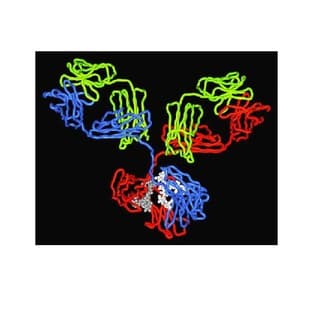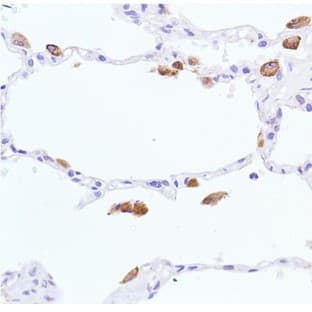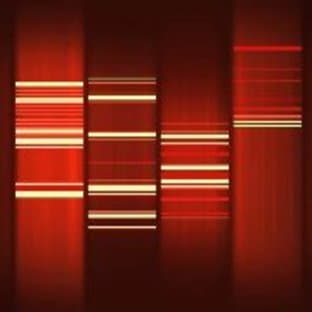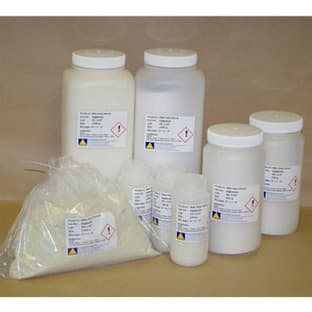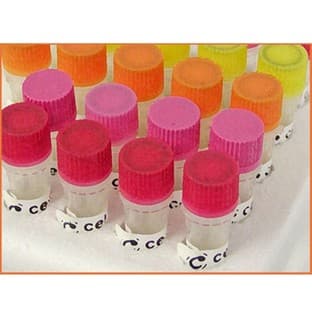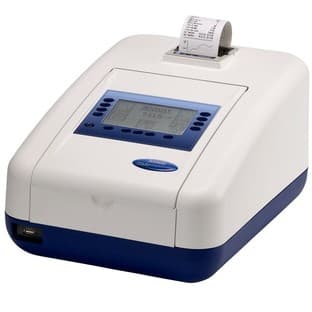
Supplier:
BOSTER IMMUNOLEADERCat no: PA1677
Polyclonal Anti-PDCD1
Prices direct from BOSTER IMMUNOLEADER
Quick response times
Exclusive Biosave savings/discounts
SPECIFICATIONS
Price
200.00 USD
Catalog Number
PA1677
Size
100ug/vial
Applications
IHC, IHC-Fr, WB
Reactivities
Mouse, Rat
Form
Lyophilized
Format
Each vial contains 5mg BSA, 0.9mg NaCl, 0.2mg Na2HPO4, 0.05mg Thimerosal, 0.05mg NaN3.
Gene Id
PDCD1
References
1.Barber, D. L., Wherry, E. J., Masopust, D., Zhu, B., Allison, J. P., Sharpe, A. H., Freeman, G. J., Ahmed, R. Restoring function in exhausted CD8 T cells during chronic viral infection. Nature 439: 682-687, 2006.\n2.Dai, H., Wan, N., Zhang, S., Moore, Y., Wan, F., Dai, Z. Cutting edge: programmed death-1 defines CD8+CD122+ T cells as regulatory versus memory T cells. J. Immun. 185: 803-807, 2010.\n3.Finger, L. R., Pu, J., Wasserman, R., Vibhakar, R., Louie, E., Hardy, R. R., Burrows, P. D., Billips, L. G. The human PD-1 gene: complete cDNA, genomic organization, and developmentally regulated expression in B cell progenitors. Gene 197: 177-187, 1997.\n
Swiss Prot
Q02242
Storage Temp
At -20 degree C for one year. After reconstitution, at 4 degree C for one month. It can also be aliquotted and stored frozen at -20 degree C for a longer time.Avoid repeated freezing and thawing.
Additional Info
A synthetic peptide corresponding to a sequence in the middle region of mouse PDCD1, different from the related rat sequence by two amino acids.
Scientific Background
PDCD1(Programmed cell death 1), also called PD1, encodes a cell surface receptor that is a member of the B7 superfamily involved in immunomodulation. PDCD1 acts as an inhibitory molecule on T cells after interacting with its ligands PDL1 and PDL2. This protein is expressed in pro-B-cells and is thought to play a role in their differentiation. The PDCD1 gene is mapped on 2q37.3. The PDCD1 gene contains 5 exons. In mouse cells, the Pdl2 protein bound to human PDCD1, resulting in inhibition of T-cell proliferation and cytokine production. Using flow cytometric analysis, Said et al. found that expression of PDCD1 was upregulated on CD16-positive and CD16-negative monocytes, but not on dendritic cells, in viremic HIV-positive patients, but not in highly active antiretroviral therapy (HAART)-treated HIV-positive patients. PDCD1 upregulation in monocytes was induced by microbial Toll-like receptor ligands and inflammatory cytokines.\n\n
More from BOSTER IMMUNOLEADER
Applications
IHC, WB
Reactivities
Hum
Applications
IHC, WB
Reactivities
Mouse, Rat
Applications
ELISA, WB
Reactivities
Mouse
Applications
WB
Reactivities
Hum, Mouse, Rat
Applications
IHC, WB
Reactivities
Hum
Latest promotions
Spend less time on DNA cleanup so you can do more science. The MSB Spin PCRapace is the fastest way to purify your DNA from PCR, restriction digestion, and...
New brilliant antibodies, and new lower prices!For flow cytometry reagents in general, \"bright is better.\" The violet-excitable BD Horizon™ BV421 and...
As an incentive to qualify our BSA, we are offering a 20% discount when you purchase your first 100g, 500g or 1000g of any grade of Bovine Serum Albumin....
It is not every day that you are given something for nothing. We are giving away additional spectrophotometer software.Cecil Instruments have enhanced the...
We're so sure that you'll prefer Cayman Assay kits over your present brand that we're willing to give you a free assay kit to prove it!
For the past decade scientists have extensively used ATS secondary toxin conjugates to make their own targeted toxins for in vitro use.The ability to combine...
10% Discount on 2 Rabbit Polyclonal Antibody Service. With over 20 years experience, SDIX has developed into the premier US custom antibody producer,...
Did your supplier increase the price of Fetal Bovine Serum? Did they substitute the US Origin with USDA? Well say no more! Innovative Research is still...
Bulk Cytokines with Custom Vialing.20 - 50% off cytokines, growth factors, chemokines and more...For a limited time Cell Sciences is offering substantial...
Jenway’s 73 series spectrophotometer range provides four models with a narrow spectral bandwidth of 5nm and an absorbance range of –0.3 to 2.5A,...
Are you planning to have a customised antibody made for your research?Since 2000, Everest has been producing a catalog containing thousands of affinity...
Top suppliers
United States Biological
230753 products
Carl Zeiss Microscopy
27 products
Promega Corporation
11 products
Panasonic Healthcare Company
5 products
Life Technologies
1 products
Nikon Instruments Europe
11 products
Olympus Europa Holding GmbH
3 products
Leica Microsystems, Inc.
10 products
GE Healthcare Life Sciences
2 products
Tecan Trading AG
19 products
Beckman Coulter, Inc.
1 products
AB SCIEX
3 products
BD (Becton, Dickinson and Company)
1 products
RANDOX TOXICOLOGY
5 products
Randox Food Diagnostics
6 products



